New Series. Daniel Walber talks production design in "The Furniture". Previously we looked at The Exorcist, and Carol and Brooklyn. And now...
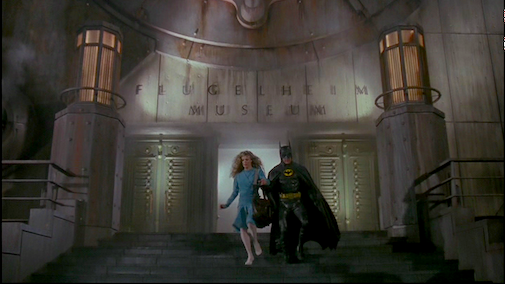
In the Oscar battle between Batman and Superman, there is no real contest. Superman’s three nominations, zero wins and one special achievement award have nothing on Batman’s fifteen nominations and three wins. And it doesn’t look as if we have to worry about the tally getting complicated by any nominations for Batman v Superman: Dawn of Justice.
However, the arrival of the newest Batman movie is an excellent excuse to discuss the oldest. Tim Burton’s 1989 Batman remains the only superhero movie to ever win the Best Production Design Oscar, an honor it certainly deserves to keep...
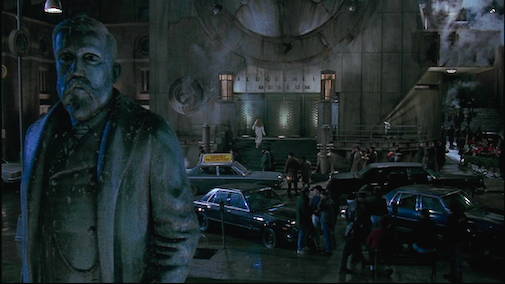
Production designer Anton Furst’s vision of Gotham is an Art Deco nightmare. He and his team, including Oscar-winning art director Peter Young, combined diverse architectural styles rather than attempting to invent something entirely fantastical. It’s a compelling, if unholy, concoction of influences that range from the Art Nouveau chairs of Rennie Mackintosh to the futuristic buildings of Shin Takamatsu. This refusal to draw from a single period is part of why it still looks so unique.
The best example of this is the ornate set at the middle of the film, the “Flugelheim Museum.” Peggy Guggenheim used to refer to the Guggenheim Museum as “my uncle’s garage,” a description even more perfect for this dystopian parody of the Manhattan landmark.
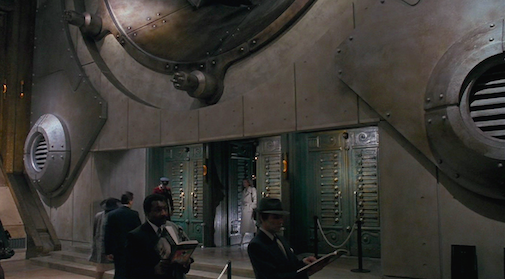
Vicki Vale (Kim Basinger) arrives to meet Bruce Wayne for dinner. As she ascends the stairs, it’s easy to miss the art hanging on the walls in the lobby. The room is dominated by exaggerated Art Deco columns and round windows that resemble the portholes of a ship. They’re a dark interpretation of Art Moderne’s nautical tendencies, which cruises both back to Disneys’s 20,000 Leagues Under the Sea and ahead to the rise of steampunk.
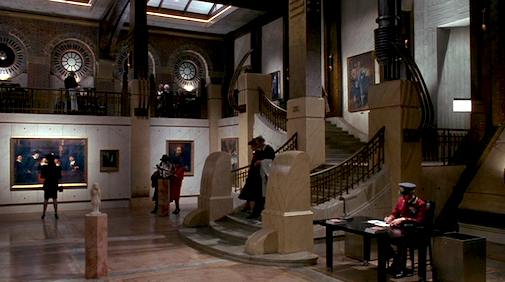
It’s no wonder that no one comes to the Flugelheim for the art. Instead, it’s basically a restaurant with very expensive decor. This being the late 1980s, it’s easy to see this as a critique of all the money that had just rushed into Manhattan, yuppies more interested in being seen in a palace of culture than actually looking at any of the cultural history hanging on the walls.
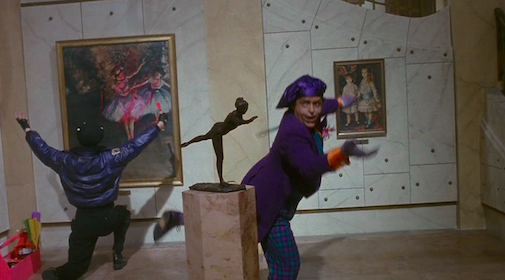
Of course, even that limited respect for Degas is more than what The Joker (Jack Nicholson) is willing to give. After gassing everyone in the room except Vicki, he bursts in to “improve” all of the art on display. He and his goons kick over statues and deface paintings with his signature neon greens and pinks.
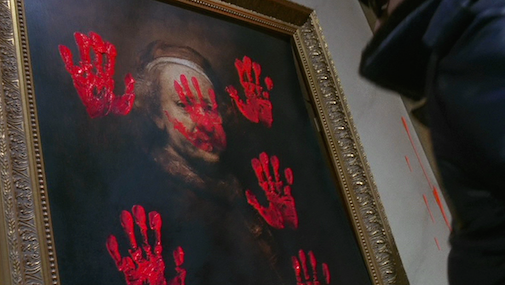
These masterworks include, among others, Vermeer’s “Woman Weighing Pearls,” Rembrandt’s "Self Portrait at the Age of 63," and Gilbert Stuart’s unfinished portrait of George Washington. They’re all quite respectable, and all quite old.
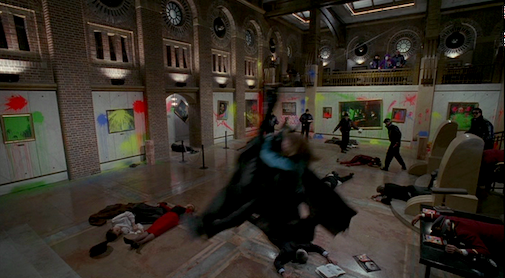
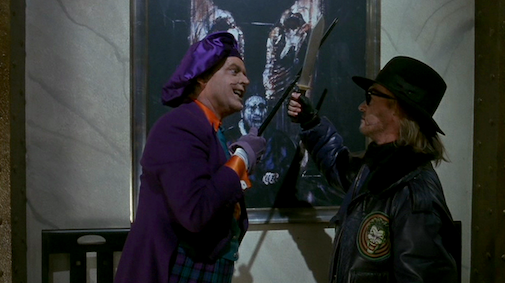
Like the Italian Futurists of a nearly a century before, The Joker is all about burning down museums to make way for new art. He tells Vicki that he’s the “first functioning homicidal artist.” His work is alive - at least until he kills it. The only work in the museum that he protects, Francis Bacon’s “Figure with Meat,” is just the sort of fleshy nightmare that The Joker is all about.
This fits into another of the 1980s cultural fixations that drive Burton’s Batman: the rise of plastic surgery. The Joker’s methods, poisoning makeup and mutilating the smiles of his victims, exaggerate and distort the human face in the same way that the production design reshapes New York City’s Art Deco skyline. The anxiety that grips Gotham City is both monumental and monstrous, and it manifests on every level of the film’s design.